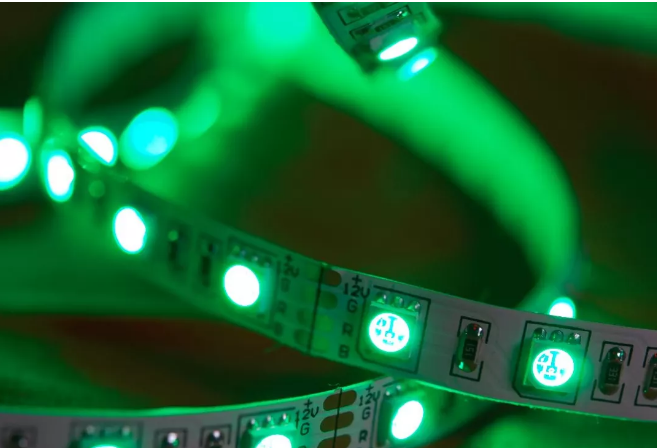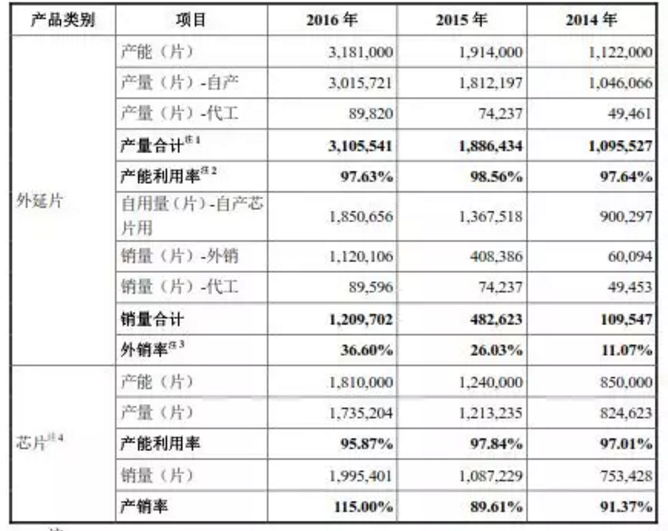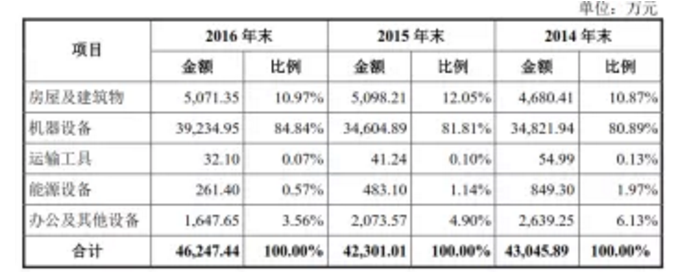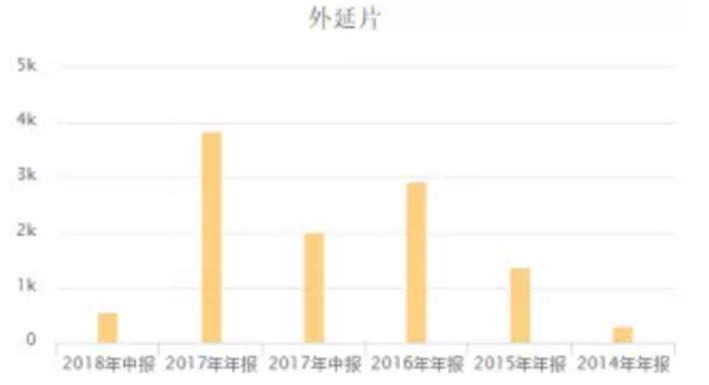
Since Jinya Technology ((SZ:300028)) went public and falsified the ChiNext, a lot of ChiNext companies have been violent. Different from the fact that Jinya Technology had tossed in A shares for eight years before the East Window incident occurred, today the protagonist "shows his true picture" only half a year after the IPO, and his performance has declined by a thousand miles.
It is Jucan Optoelectronics (SZ: 300708), a listed company that has suffered even three years.
Increasing revenue and profit without increasing cash flow, and the performance after the listing has changed strangelyLooking at the most basic data first, from 2016 to June 2018, operating income was 480 million, 621 million, 270 million, net profit was 61 million, 110 million, -12 million, and operating cash flow was 126 million, 129 million, -77 million.
Based on basic data alone, we can quickly have a seven-seven-eights understanding of Jucan Optoelectronics.
Jucan Optoelectronics, which went public in March 2017, increased its operating income by 141 million and net profit by 49 million in the year of its listing, both showing a relatively significant increase, but its operating cash flow only increased by more than 3 million. In other words, the operating income and net profit of Jucan Optoelectronics in 2017 are quite mismatched with operating cash flow.
This is how to achieve rapid increase in revenue and profit, but the cash flow is stagnant. To answer this question, we must first explain the main business and characteristics of Jucan Optoelectronics. ??????????????????????????????????????????????????????????????????????????????????????????????????????????????????????????????????????????????????????????????????????????????????????????????????????????????????????????????????????????????????????????????????????????????????????????????????????????????????????????????????????????????????????????????????????????????????????????????????????????????????????????????????????????????????????????????????????????????????????????????????????????????
The main business of Jucan Optoelectronics is the R&D, production and sales of LED epitaxial wafers and chips. It is a typical high-tech industry. This business is extremely dependent on government subsidies in terms of policies. It is also a typical industry that requires R&D to promote capacity expansion. It is emphasized during development. Monopoly and patents.
Where does the raw material epitaxial wafer for LED chips come from?It does not require self-produced raw material epitaxial wafers to be satisfied with its own LED chip production, nor does it need to be produced through external imports. It can still be said that the funds raised by IPO can be used for LED chip production.
Jucan Optoelectronics is the speaker and contributor of this big story, and it is a wonderful work of A-shares.

The prospectus indicates that one of the main uses of Jucan Optoelectronics' epitaxial wafers is the raw material for its own LED chips. From 2014 to 2016, Jucan Optoelectronics' self-use epitaxial wafers were 900,300, 1,367,500, and 1,850,700, accounting for 80.24%, 71.45%, and 58.18% of the total production capacity. In other words, the epitaxial wafers produced by itself are gradually eliminated from the company's LED chips.

If your own epitaxial wafers no longer meet the raw material needs of your own LED chips, you should naturally buy them through a third party. But in fact, in 2016, there was a downward trend in material payments. This is because a large number of raw materials of Jucan Optoelectronics have been paid in the form of notes payable since 2016. The problem is that the prepayment of Jucan Optoelectronics, which requires a large amount of raw materials to be purchased, is much lower than in 2015, which is puzzling.
Are policy subsidies really used for production?
The proper use of policy subsidies and the utilization of capacity can help Jucan Optoelectronics achieve its goal of beautifying the company's performance. Jucan Optoelectronics' degree of financial understanding is rare among A-share companies.
According to the prospectus, the policy subsidy finance of Jucan Optoelectronics from 2014 to 2016 was 25 million, 27 million, and 33 million, accounting for 38.96%, 98.60%, and 47.80% of the current total profit.
Jucan Optoelectronics government subsidies included in the current profit and loss from 2014 to 2016 are 48.55%, 30.04%, and 42.58%. According to accounting standards, if the subsidy cannot be directly used for production in the current period, it should be included as deferred income. However, according to this method analysis, the proportion of profit and loss for the current year in 2015 fell sharply, indicating that a large number of projects under construction that year have not yet been put into production.

The prospectus of Jucan Optoelectronics shows that the construction in progress from 2014 to 2016 was 18 million, 77 million, and 35 million. The additional 59 million yuan in 2015 Jucan Optoelectronics has clearly stated that the purchased equipment has not yet been accepted, that is to say, it has not yet been carried out. Installation and production.

Jucan Optoelectronics, which has declined in self-sufficiency, actually increased its capacity utilization rate instead of falling?!
However, based on the total fixed assets of 430 million, 423 million, and 462 million from 2014 to 2016, the corresponding operating income is 296 million, 352 million, and 480 million, and the corresponding unit fixed asset production capacity is 0.69, 0.83, and 1.04. The utilization rate has risen sharply since 2015.
The problem is that the acceptance and installation of Jucan Optoelectronics' main equipment was completed in 2016, and the main equipment MOCVD equipment is used to produce epitaxial wafers, but the epitaxial wafers produced in 2016 still cannot meet the needs of Jucan Optoelectronics' LED chip raw materials. .
This has been described in detail in the previous paragraph, so I won’t waste my tongue here.
It is also curious that the main business of LED chips, such as Jucan Optoelectronics, has greatly improved its capacity utilization rate, or is there any other channels.
Why are epitaxial wafers with serious overcapacity still being produced?After listing, Jucan Optoelectronics certainly understands its details. Therefore, from 2017 to June 2018, it has borrowed 312 million yuan in long-term loans in just one and a half years, combined with the 352 million funds raised by the company’s listing. It seems that the company should be able to do something.

Moreover, the gross profit margin of Jucan Optoelectronics in the year and a half since its listing is also significantly different from the rapid increase in the gross profit margin before the listing. The gross profit margin of the LED photoelectric chip from January to June 2018 shows that the gross profit margin of LED optoelectronic chips has dropped by 10.55%.
It seems that the time has come to transform.
According to public data, there were 46 sets of MOVID equipment in 2016, corresponding to a production capacity of 3.0157 million pieces, and an average of 65,600 pieces of epitaxial wafers were produced per unit; as of January-June 2018, there were 48 sets of equipment, corresponding to a production capacity of 2.2212 million pieces. , Each unit produces an average of 46,300 pieces. ,
In other words, according to this progress, it is reasonable that the production capacity of each MOVID device for the whole year of 2018 should exceed that of 2016.
However, according to the capacity utilization rate from January to June 2018, it is only 0.80, which means that Jucan Optoelectronics' output is much larger than sales and its own consumption, which is a serious overcapacity.

According to public information, the operating profit of epitaxial wafers from January to June 2018 was only 5.5731 million yuan, with an average operating profit of only 2.52 yuan per epitaxial wafer, while in 2016 an epitaxial wafer was 10.34 yuan operating profit. This makes people wonder why Jucan Optoelectronics still has to produce a large number of epitaxial wafers that can not meet its own LED chip needs and have continued to decline in operating profits for a year and a half.
Fortunately, on July 6, 2017, Jucan Optoelectronics received a wholly-owned subsidiary, Jucan Optoelectronics Technology (Suqian) Co., Ltd., and received 95.09 million yuan in subsidies for machinery and equipment from the Finance Bureau of Suqian Economic and Technological Development Zone.
According to the company, according to relevant regulations, the company will include government subsidies related to the above assets as deferred income, which means that this subsidy cannot be directly invested in the current period, and it has to find a way to defer the investment before it will generate income.
Therefore, based on the above situation, Jucan Optoelectronics seems to be ready for the next stage of investment. Unexpectedly, a large proportion of the company's senior executives are now cashing out.
On the evening of September 25, 2018, the announcement stated: Jucan Optoelectronics shareholders, directors, supervisors, etc. have reduced their holdings by no more than 11.61% of the shares, totaling about 455 million yuan. You know, according to Jucan Optoelectronics' own disclosure, in the third quarter of 2018, it will lose 60 to 70 million yuan! Jucan Optoelectronics, which has been on the market for less than a year, is finally ready for its enthusiastic big hands and gave the leeks a resounding slap in the face. .
Source of this article: Alpha Works
Multi-Function Electric Cooker
Multi-Function Electric Cooker,Electric Rice Cooker,Multi-Function Rice Cooker,Automatic Electric Rice Cooker
Shandong Sangle Group Co.,Ltd. , https://www.sangle-group.com